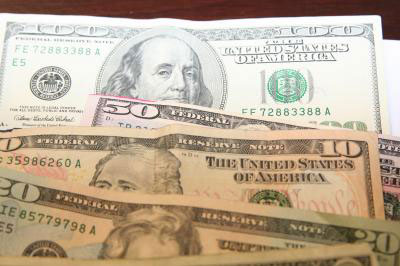Most U.S. Money Laced With Cocaine

Traces of cocaine taint up to 90 percent of paper money in the United States, a new study finds.
A group of scientists tested banknotes from more than 30 cities in five countries, including the United States, Canada, Brazil, China, and Japan, and found "alarming" evidence of cocaine use in many areas.
U.S. and Canadian currency had the highest levels, with an average contamination rate of between 85 and 90 percent, while Chinese and Japanese currency had the lowest, between 12 and 20 percent contamination.
The findings were presented yesterday at the 238th National Meeting of the American Chemical Society in Washington, D.C.
Study leader Yuegang Zuo of the University of Massachusetts in Dartmouth said that the high percentage of contaminated U.S. currency observed in the current study represents nearly a 20 percent jump in comparison to a similar study he conducted two years ago.
"To my surprise, we're finding more and more cocaine in banknotes," Zuo said.
Scientists have known for years that paper money can become contaminated with cocaine during drug deals and directly through drug use, such as snorting cocaine through rolled bills. Contamination can also spread to banknotes not involved in the illicit drug culture, because bills are processed in banks' currency-counting machines.
Sign up for the Live Science daily newsletter now
Get the world’s most fascinating discoveries delivered straight to your inbox.
"I'm not sure why we've seen this apparent increase, but it could be related to the economic downturn, with stressed people turning to cocaine," Zuo said.
Such studies are useful, he noted, because the data can help law enforcement agencies and forensic specialists identify patterns of drug use in a community.
Previous studies that have reported on cocaine traces on money have had several drawbacks, Zuo said. Some only sampled a small number of bills, while others destroyed the money in the process of testing.
Zuo and his colleagues used a modified instrument that allowed for faster, simpler and more accurate measurement of cocaine contamination than other methods, without destroying the currency.
The amounts of cocaine found on U.S. bills ranged from .006 micrograms (several thousands of times smaller than a single grain of sand) to more than 1,240 micrograms of cocaine per banknote (about 50 grains of sand).
The scientists found that larger cities like Baltimore, Boston, and Detroit had among the highest average cocaine levels. Washington, D.C., ranked above the average, with 95 percent of the banknotes sampled contaminated with the drug. The lowest average cocaine levels in U.S. currency appeared on bills collected from Salt Lake City.
Despite the high percentage of cocaine-contaminated banknotes, Zuo points out that the amount of cocaine found on most notes was so small that consumers should not have any health or legal concerns about handling paper money.
"For the most part, you can't get high by sniffing a regular banknote, unless it was used directly in drug uptake or during a drug exchange," Zuo said. "It also won't affect your health and is unlikely to interfere with blood and urine tests used for drug detection.
What are mRNA vaccines, and how do they work?
Deadly motor-neuron disease treated in the womb in world 1st











